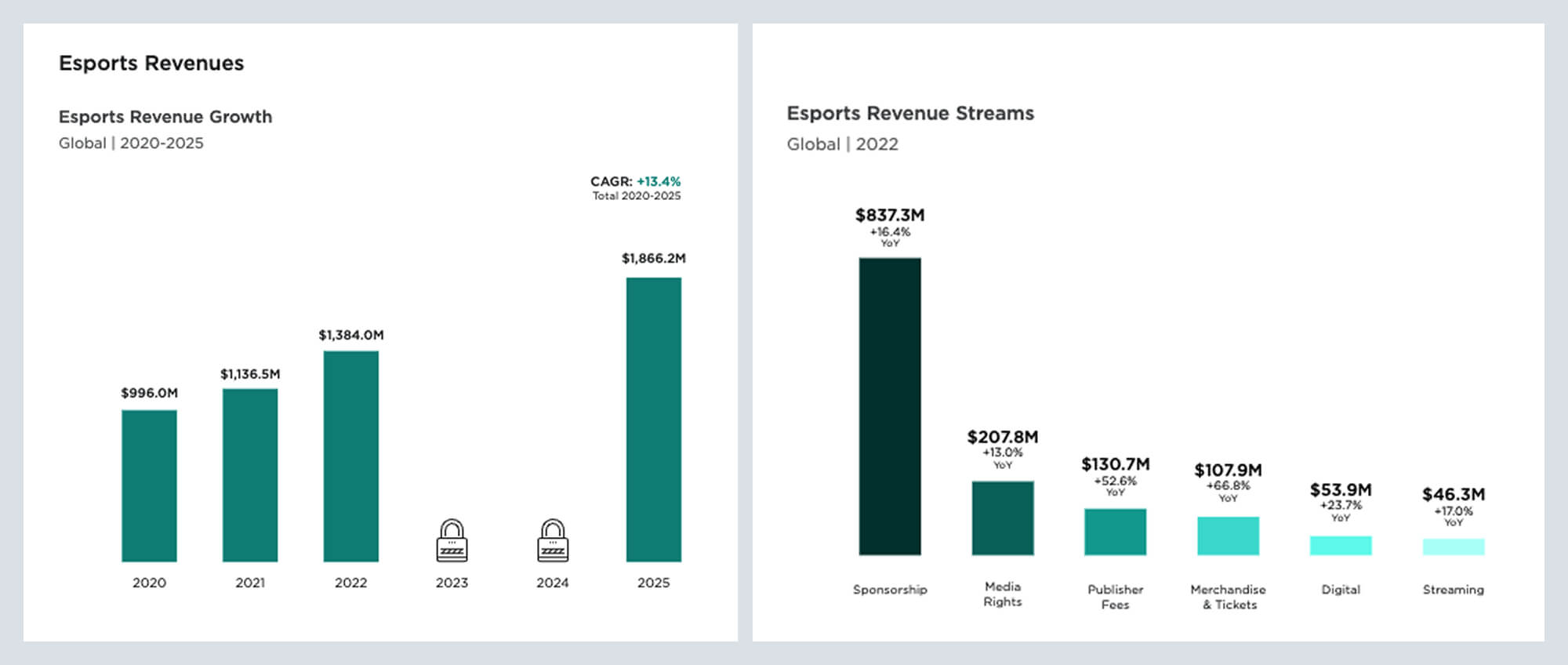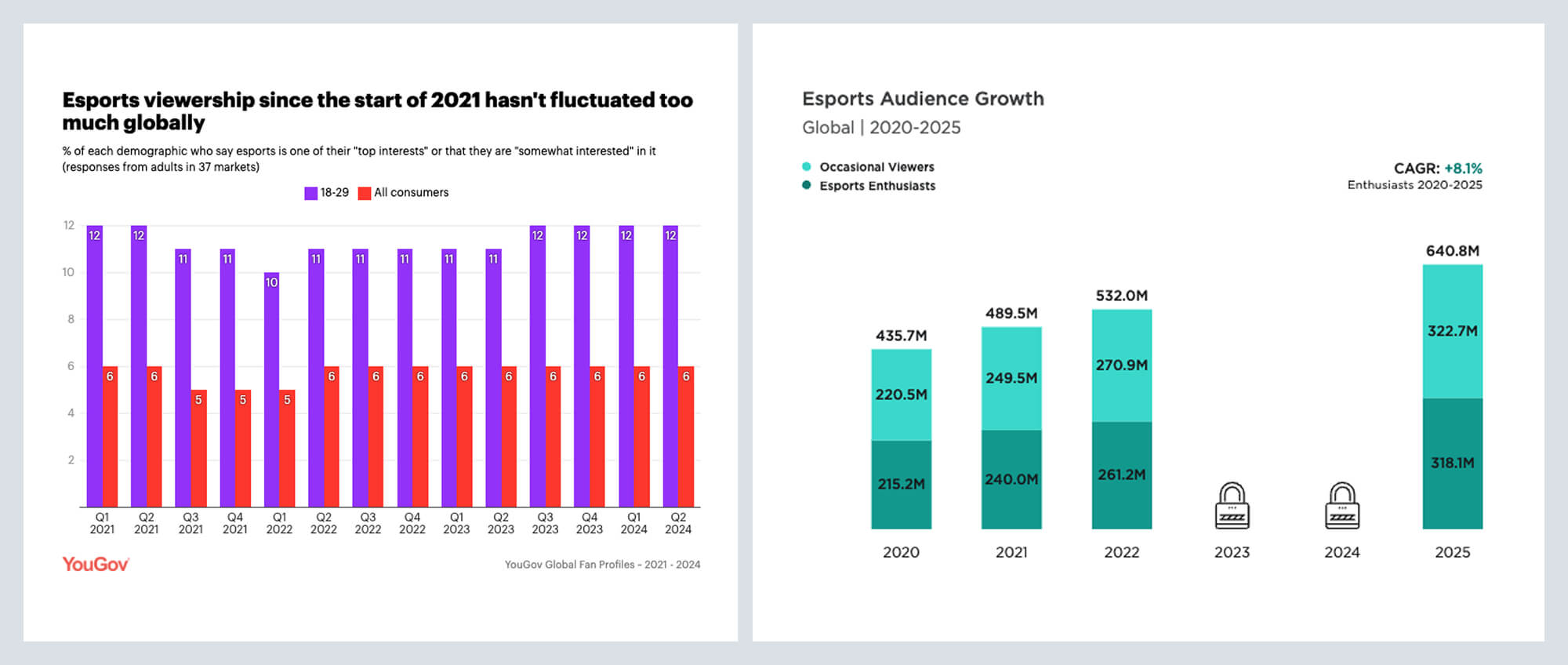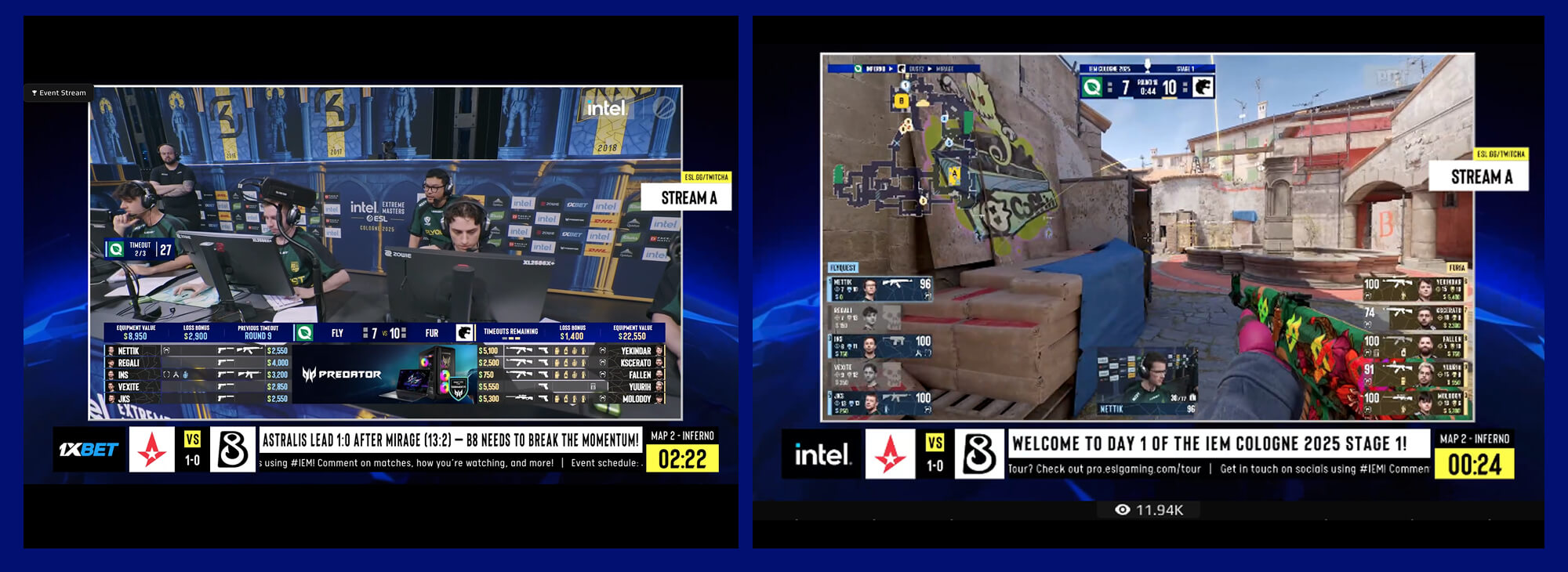Following the so‑called esports winter of 2023, when advertisers and investors pulled back, the industry has mounted a measured recovery over the past 18 months. Brand sponsorship remains the dominant revenue stream and is projected to surpass $1 billion, up from $837 million in 2022.

Consumer panels indicate that interest in esports remains stable, with a notable rise among younger demographics. According to YouGov, 33% of 18–29 year-olds expressed interest in esports in early 2024, up from 27% in 2021. Market growth is being driven by an expanding global audience, projected to reach approximately 640 million viewers this year, buoyed by major, blockbuster events in Saudi Arabia, where strategic investments in gaming have rapidly positioned the country as a central hub in the esports ecosystem.

Despite green shoots, esports has yet to become a standard line item in advertising forecasts, and it remains unclear how budgets are allocated directly to esports properties versus adjacent influencer or content marketing efforts. In 2025, brand sponsors are consolidating around top-tier IP, teams such as Fnatic, and tournaments like the Esports World Cup, taking place in Riyadh this summer, all of which offer a direct route to global gaming audiences.


There’s no question brands are eager to seize upon esports inventory. Esports streams and broadcasts, which often attract large and enthusiastic audiences, represent valuable real estate. However, sponsorship growth is held back by a number of disqualifying factors. First, current inventory is static and therefore limited in scope. Second, brand sponsors have unmet expectations for campaign management and activation. Third, the industry lacks a robust approach to audience and campaign measurement.
All three factors ladder up to a larger truth. In esports today, broadcast inventory is available through graphic overlays, branded segments and jersey or console placements. By contrast, traditional sports advertising is, by necessity, rapidly adopting dynamic media solutions, as evidenced by the rise of geo-targeted overlays and virtual ad replacements in live broadcast feeds. Our contention is that esports must now undergo the same transformation. Without the integration of real-time, dynamic media, the existing expectation gap between brand sponsors and the current, analogue nature of esports broadcasts will continue to widen. Julian Tan, former Head of Esports at Formula 1, believes that viewing audiences will come to expect a more nuanced form of brand interaction:
"There’s a level of interactivity and intimacy in esports that’s quite different from traditional sports. Fans scrutinise brand involvement more closely, so it’s not enough to slap a logo on a jersey. Esports audiences are predisposed to want gaming-adjacent, interactive campaigns that are thoughtfully integrated into the viewing experience. Token visibility is not good enough."
Julian Tan
Strategic Advisor, ex-BCG, Formula 1
In many ways, the esports industry is ready for change. Coverage is, for the most part, broadcast on streaming platforms, with the Esports World Cup, currently simulcast on YouTube, Twitch, and the dedicated esports platform FACEIT, serving as a timely example. With connections to the digital media buying ecosystem, different viewers could, with the right data, be shown targeted overlays during live broadcast streams. However, in most esports broadcasts, the majority of total airtime, often 60% or more, is spent within the game feed, where streaming and digital video formats cannot be utilised in the same way. Once the match is underway, sponsors are reduced to showing up during breaks in gameplay, analyst segments, or post-match coverage and interviews. These moments are valuable, but they represent less than half of the viewing time, and are likely to coincide with lower levels of attentive viewing.

Esports fandom is built on moments. Whether it’s a clutch play, a shock upset, or a last-second win, these are the spikes in attention that make esports compelling and the viral moments that are clipped, shared and commented on. For sponsors, they represent exactly the kind of cultural relevance and emotional engagement that any brand would hope to associate with.
In traditional sports, viral moments are already addressable. In recent weeks, agency holding group Omnicom launched major partnerships with Disney in the US and Sky Media in the UK to give brands access to high-attention events in real time. The idea is simple: trigger campaigns to run during specific match events, such as a goal, a card, or a lead change, and serve relevant, contextual messaging when audiences are most engaged. Behind both partnerships sits programmatic media buying platform The Trade Desk.
Esports broadcast streams appear to be an ideal testbed for this kind of media buy. However, as previously stated, a second layer of abstraction is needed, one that moves beyond broadcast overlays to transmit brands into the virtual environment, allowing them to remain present throughout the broadcast.

Esports takes place inside the world’s most iconic gaming IP, and AAA publishers are usually not willing to integrate third-party ad monetisation into their core game builds. However, integration at the esports level is a different proposition. Hypothetically, a third-party SDK may be approved for tournament-specific environments, controlled builds or devices used during sanctioned competitions, rather than the live version of the game played by millions of consumers. This approach creates technical and creative safeguards for publishers, while reinforcing that esports is a broadcast media buy.
Traditional targeting parameters, which rely on device IDs or behavioural data, don’t apply when virtual environments are streamed from a single gaming device to a large secondary audience. Instead, targeting in this context depends on moments related to the competition. With an in-game SDK integrated locally and dynamic ad placements present in the virtual environment, brands could pre-book against a collection of in-game events, while also having the freedom to optimise campaigns and adjust messaging as the tournament progresses.
As publishers deepen their relationships with esports league operators, such as ESL/FACEIT Group, which typically oversee tournament operations, broadcast production, and brand and commercial partnerships, there is a growing case for in-game advertising. Dynamic ad placements would open new inventory that is contextually easy to understand in a market that is crying out for additional supply. The introduction of new inventory would enrich brand tracking studies in an environment where direct attribution is not straightforward, and there’s a logical sense of continuity; it’s much the same as the status quo, yet enhanced. Julian Tan, who oversaw the rollout of Formula 1's esports property, believes sponsorship and advertising opportunities remain largely untapped:
"There’s a significant amount of untapped inventory across esports. From a rights holder’s perspective, the missing piece is a system that allows brands to activate in a way that’s scalable, personalised, and respectful of the fan experience. The real potential lies in turning virtual environments into storytelling layers, not just surfaces for visibility, but spaces for authentic interaction."
Julian Tan
Strategic Advisor, ex-BCG, Formula 1
Revenue sharing between publishers and esports properties is nothing new. In many cases, publishers already offer team-branded digital items for sale within their games and split the revenue with esports organisations. In-game advertising would follow a similar logic. Although the inventory may be sold by leagues or representative agencies, the placements would exist within a virtual world owned and operated by the publisher. As such, revenue sharing would be a natural requirement, which, while introducing a more complex commercial model, involving teams, leagues, and publishers, would also broaden the overall revenue opportunity. A larger pie, split fairly, would represent progress for the commercial maturity of esports.